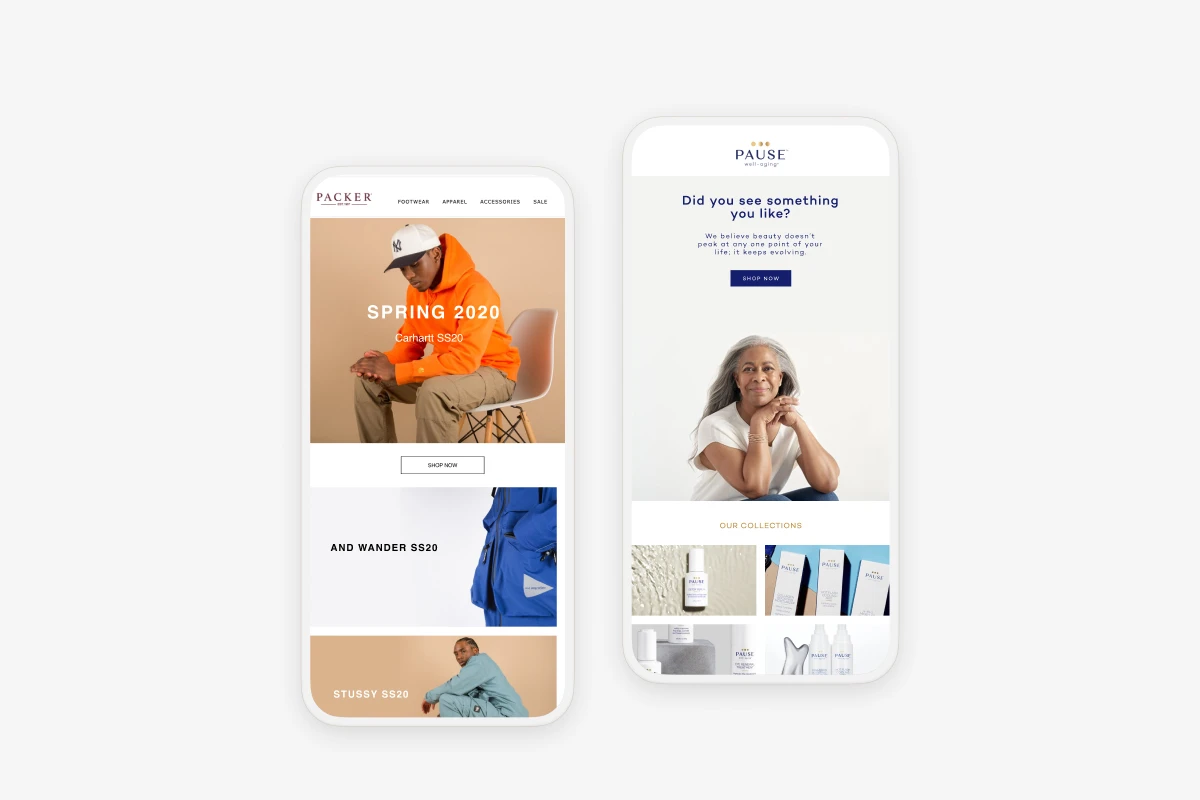Klaviyo Email Marketing for E-commerce Brands

Quick Summary Email marketing is one of the most useful revenue-generating tools every brand should be using. No matter what industry your brand is in, incorporating email marketing into your customer communications will not only generate revenue, but it will also increase your customer lifetime value and nurture valuable relationships with your customers. At Avex, we use Klaviyo for our clients’ email marketing. Below we break down the most useful flows and list segmentations every brand should consider.
Email marketing is one of the most useful revenue-generating tools every brand should be using. No matter what industry your brand falls under, incorporating email marketing into your communications will not only generate revenue, but it will also increase your customer lifetime value and nurture valuable relationships with your customers. At Avex, we use Klaviyo for our clients’ email marketing. Below, we break down the most useful flows and list segmentations every brand should consider.
Klaviyo Flows
What is a flow?
A flow is a sequence of automated emails (one or more) set off by a specifically-defined trigger (a list, segment, actions). Flows are used to nurture relationships with your customers at any point of their customer lifecycle.
Welcome Series
The Welcome Series is your brand’s first impression to the user who has just signed up to engage with you via email. This first email engagement with a new customer is your opportunity to establish your brand and show the value your brand can bring to your customer, whether it’s through coupons/discounts, exclusive offers and events, or products they may be interested in.
Abandoned Cart Series
Abandoned Cart emails are one of the most important ways your brand can engage with your customers. On average, almost 70% of shopping carts are abandoned. Regardless of why people leave their carts without checking out, most people are still interested in the products. Therefore, it’s crucial not to leave money on the table! Email these customers that you saved their cart and to not forget about these items.
Browse Abandonment Series
Browse abandonment emails are another way to make sure you're not leaving money on the table. For various reasons, countless users browse websites everyday without adding to cart. Therefore, sending emails to these users is a great way to re-engage with them and help them make their purchasing decisions. You can send these users an email with a product lineup of the products they’ve viewed but didn’t add to cart and let them know you can help answer any questions they have. Showing you have great customer service may help make them make their purchasing decision in favor of your brand.
Post-First Purchase Series
The post-purchase experience is crucial, and Post-First Purchase emails are what can turn a new/one-time customer into a repeat customer. Now that the customer has spent money with your brand, they will want to know exactly what to expect in the coming days. Offering words of appreciation and information about their order will give them further confidence in your brand to continue a relationship with you beyond this first purchase.
Winback Series
Winback emails are sent to customers who have engaged with your brand in the past but haven’t in a long time. This is also an opportunity to make sure money isn’t left on the table, for it is five times more expensive to acquire a new customer than to retain existing customers. When these emails go out will depend on the buying cycle of the products in your industry.
VIP Series
It is far more cost-efficient to retain existing customers than it is to acquire new ones. That’s why it is especially important to nurture your relationships with your VIP customers. Communicating your appreciation of their support with genuine messaging and exclusive offers/discounts will go a long way to keep them happy and make them feel special to continue shopping with your brand.
Sunset Series
Quality over quantity applies to your email list as well. In order to create valuable and meaningful segments (discussed below), it is important to have a quality email list of customers with actual potential to continue a relationship with your brand. Emailing users who haven’t interacted with your brand for a long time (usually one year) will not only clean out your email list but it will also give your customers to come back to your brand. Put your brand top of mind by offering a discount as an incentive to reconsider shopping with your brand.
Email Segmentations
What is email segmentation?
Email Segmentation divides your subscriber list into different segments, based on set criteria. The criteria can vary from demographic such as location, age, and gender, purchasing behavior, browsing behavior, purchase frequency, and email engagement, to name a few.
Benefits of email segmentation
When segmenting your customer list, the division allows you to be more specific with your communications and recommendations to your customers. More personalization can...
- Increase click through rates
- Decrease unsubscribes
- Increase conversions
- Improve customer experience
Email segmentation ideas you can implement right now using Klaviyo and Shopify:
VIP Customers
Using Shopify Plus Flow, you can tag customers who spend a certain amount or make repeat purchases. Tag these customers as “VIP” and create a segment in Klaviyo. You can also create a VIP segment directly in Klaviyo by setting a definition (a criteria) for purchase frequency. For example, the VIP segment definition can be that a customer placed at least 5 orders or spent at least $500. VIP customers will receive exclusive deals or early access to products. This approach will let customers know you appreciate their loyalty.
Average Order Value
Using Klaviyo’s predictive analytics, you can get an idea of which customers tend to spend more money with your brand and which customers tend to spend less. This behavior prediction allows you to send content about items that correlate with their spending habits/budget.
Product Category
Segment customers based on their purchase history. What types of products do they like? Send suggestions of related products that are very specific to that segment.
You can also get very specific and segment customers based on an individual product and tailor communication with tips for that product. This is a great opportunity to cross-sell items. For example, if you’re trying to promote winter accessories (hats, scarves, gloves), you can create a cross-sell segment of customers who purchased winter coats and boots.
Demographic
For brands that sell products for multiple genders, ages, and seasons, create segments based on your customers' profile.
Instead of sending generic email campaigns, try sending recommendations for products that are tailored to the recipient based on their age, gender, and/or where they live. For example, if they live in a cold-weathered area, send seasonal campaign emails to push items suitable for that weather.
Holiday Shoppers
Having a Holiday Shopper segment will be great to promote your holiday sales whether they be Black Friday/Cyber Monday, Winter Holidays, Labor Day, Mother’s Day, Father’s Day, etc. Tailor an email campaign toward this segment of previous years’ specific holiday shoppers to remind them of this year’s sales with messaging around “FOMO” (fear of missing out) on limited-time discounts.
Conclusion
Email marketing is still a very powerful tool that allows you to nurture relationships with customers at any point in their lifecycle. It allows you to utilize your customer data to create lasting relationships with your customers. By segmenting your customers and creating flows and campaigns specific to those segments, you can send them meaningful emails with valuable content.



